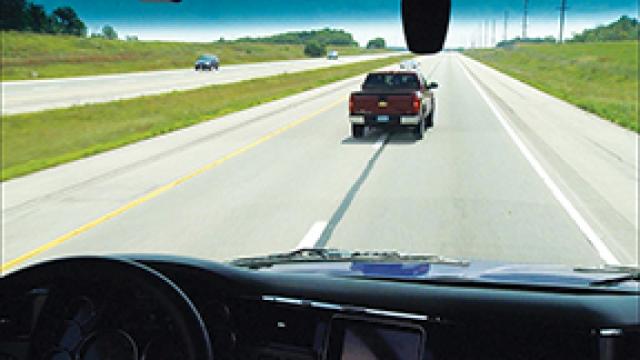Bendix Windshield-Mounted Cameras Permanently Acceptable Under Change In Fmcsa Rules

The video camera component of the Bendix® Wingman® Fusion™ collision mitigation technology and AutoVue® Lane Departure Warning (LDW) System from Bendix CVS will remain compliant with Federal Motor Carrier Safety Administration (FMCSA) rules, thanks to an exemption that was recently made permanent. Effective October 24, 2016, the rule change allows certain devices that utilize “vehicle safety technology” to be placed on the interior of commercial vehicle windshields within the area that is swept by the windshield wipers.
Bendix Commercial Vehicle Systems LLC had previously received a regulatory two-year exemption and several subsequent two-year extensions for its windshield-mounted camera. As a result, the camera used in AutoVue and Wingman Fusion already meets the FMCSA safety technology standard.
Under the FMCSA prohibitions on obstructions to a driver’s field of view, devices such as antennas or transponders that are mounted at the top of a windshield must be located outside the area swept by the windshield wipers. The regulatory change affecting the camera component of Wingman® Fusion™ and AutoVue® states that motor carriers using approved safety technologies such as lane departure warning systems and collision mitigation systems can mount devices within that area, though not more than 4 inches below its upper edge, or 7 inches above its lower edge. The devices must still remain outside the driver’s sight lines to the road, highway signs, and signals.
Wingman Fusion and AutoVue are effective in most weather conditions where lane markings are visible, which means the systems’ forward-facing cameras need to be mounted within the swept area of the windshield wiper.
In its final rule, the FMCSA stated that such devices and technologies as collision mitigation and lane departure warning “have been proven to improve safety and vehicle operations.” The FMCSA also noted that since granting the first temporary exemption to this particular windshield obstruction rule in 2009, it has not learned of any crashes attributed to the location of the devices marginally within the area swept by the windshield wipers.
FMCSA defines devices that can be included in the permanent exemption as “vehicle safety technologies in 393.5 of the FMCSRs (Federal Motor Carrier Safety Regulations) to include all technologies that had been previously granted an exemption.”
Bendix® Wingman® Fusion™ integrates next-generation advanced safety technologies (radar, camera, brakes, and SafetyDirect® by Bendix CVS) into a comprehensive driver assistance system that includes adaptive cruise control, lane departure warning, collision mitigation, and overspeed alert and action. By combining the camera data with input from radar and the vehicle’s brake sensors, Wingman Fusion creates a highly detailed and accurate data picture of a vehicle’s situation and surroundings. The camera is powered by the Mobileye System-on-Chip EyeQ processor with state-of-the-art vision algorithms.
AutoVue® is a vision-based system linking a camera with a 60-degree field of view to an on-board computer that uses image recognition software to track visible lane markings. This market-leading LDW system continually monitors a vehicle’s position and detects when the vehicle begins to drift toward an unintended lane change. Upon detection, AutoVue emits a distinctive “rumble strip” or other audible warning to alert the driver to make a correction.
In June 2016, the National Highway Traffic Safety Administration (NHTSA) released a Field Study of Heavy-Vehicle Crash Avoidance Systems, based on data from more than 110,000 hours and 3 million miles driven in trucks equipped with collision mitigation technology. The report found no rear-end collisions involving the vehicles in the study, and said the technology shows potential for significant safety benefits.
In an October 2013 report evaluating the effectiveness of on-board safety systems, the FMCSA found that trucks without LDW systems had an LDW-related crash rate per Million Vehicle Miles Traveled (MVMT) nearly twice as high as trucks equipped with such a system. This means that use of an LDW system translates to a 47.8 percent crash rate reduction per MVMT in LDW-related crashes. When the FMCSA renewed its initial exemption in 2013, it said the decision would maintain a level of safety that is equivalent to, or greater than, the level of safety achieved without the exemption.
For more information about Bendix safety systems and technologies, visit www.safertrucks.com, www.bendix.com, or call 1-800-AIR-BRAKE (1-800-247-2725).
